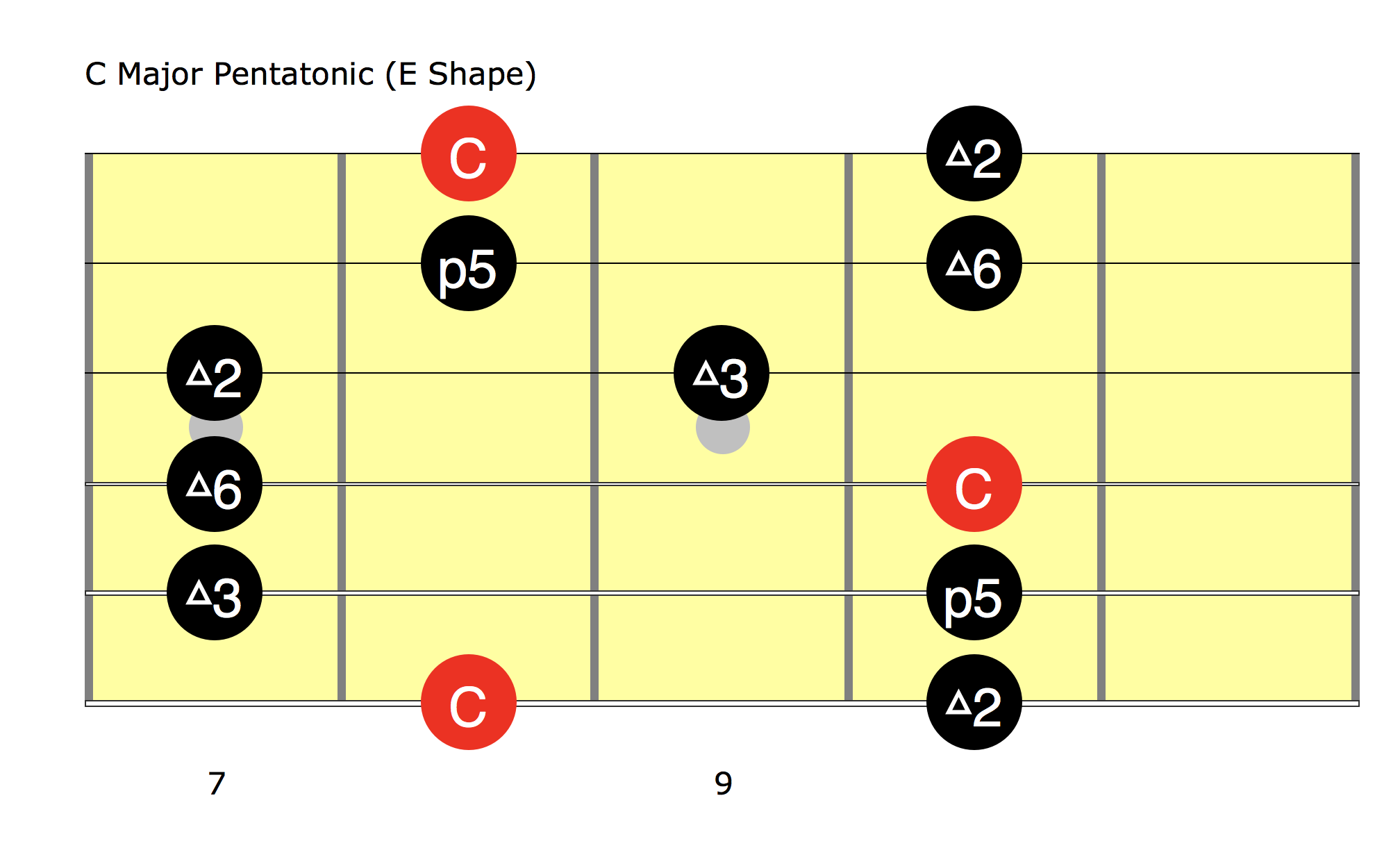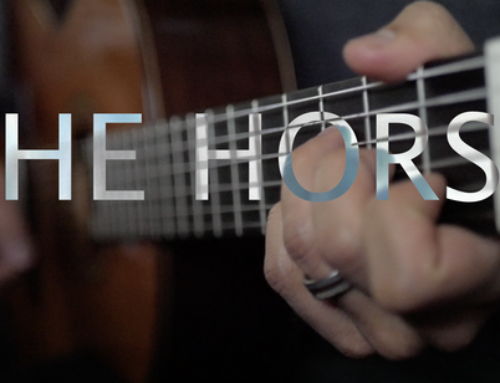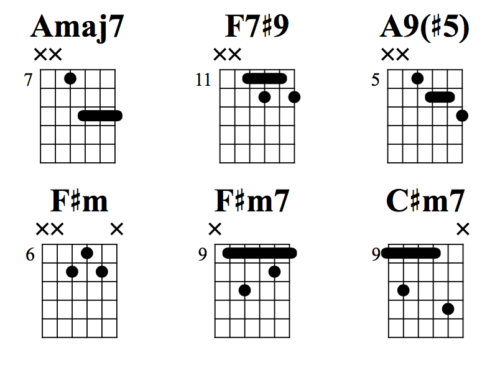In today’s lesson, we’ll break down bars 45-68 of Trey Anastasio’s 8-17-97 Bathtub Gin guitar solo from the Great went with Phish, and discuss techniques that Trey uses when improvising a solo.
For example, we’ll see how he improvises static melodies that work over several moving chords.
You’ll also learn how Trey uses the major pentatonic scale to improvise over both major and mixolydian-based chord progressions.
Bars 45-48

Here we have the first and most recognizable peak of the Went Gin.
Trey is playing a four note ostinato melody that stays static (the same) throughout each chord. Ostinato simply means repeating.
Trey is really thinking C major pentatonic in this lick, and for the next few phrases.
The C major pentatonic has the same notes as which minor scale? That’s right, the A minor pentatonic!
This melody sounds so good because trey is again stressing chord tones.
The notes C, E and G are really the heart of this melody. C, E and G are the three chord tones of the C chord.
Over the Am chord, it gives us an Am7 sound (A, C, E, G), and over the F chord it gives us an Fmaj7 sound (F, A, C, E).
If we played them as chords, this would be the overall harmony for these four bars:

Bars 49-52

For the first two bars, Trey plays the same melody that he played in the preceding section.
But over the next two chords something interesting happens.
Page and Mike momentarily abandon the Am F chords and start playing a C/Bb sound.
A lot of players freeze up when they see this kind of chord, called a slash chord, but it’s really quite straightforward.
X/Y means an X chord with a Y in the bass.
So, a C/Bb chord just means a C chord with a Bb in the bass. It goes back to mixolydian, because this is just an inversion of a C7 chord.
Trey instantly hears that this is happening, and changes up his approach.
He focuses on more of a rhythmic rather than a melodic approach based out the C major pentatonic.
Notice that he doesn’t address the mixolydian sound by playing the Bb note (which is the b7th), and notice that he doesn’t clash with the mixolydian sound by playing a B natural (with is the major 7th).
He stays out of the way of Page and Mike to see where they’re going to take it.
Bars 53 – 60


Here, Page and Mike are still alternating between two bars of C and two bars of C/Bb for this eight bar section.
Trey is playing out of the C major scale in the G shape and he’s playing another ostinato melody.
This time, he’s holding notes over the barline, which adds a really nice, subtle layer of tension.
Notice that he’s still not playing either the major 7th (B) which is out of C major, or the b7th, Bb which is part of C mixolydian.
His notes work over either tonality!
Bars 61-64

Trey is still playing that ostinato melody although it’s a bit different than what we had before, but just slightly.
We see that he’s varying his rhythms more and more as the solo goes by.
Especially after that first big peak during bars 45-48, he’s changing it up more and more, at least in terms of rhythm.
And notice over the C/Bb chord that he’s still staying out of the way – he’s not addressing the harmony by playing the b7, and he’s not clashing against the harmony by playing a major 7th.
His notes, are based on the C major pentatonic, which works over a C major tonality, as well as a C dominant tonality.
Bars 65-68

Now the jam really starts to take off.
The other members are starting to play with more and more intensity.
We saw that at the end of the last lick, Trey slid up to the 8th position, where he sticks around for this lick.
For bars 65 and 66, Trey is definitely thinking of the C major pentatonic in the E shape.
He arpeggiates right up the C chord in bar 65 and then hammers on the 13th of C in bar 66.
Page and Mike switch back to the Am F chord progression, which we see here, and Trey uses as a launch pad to really tear up the jam in the next lick.
But in this four bar phrase, he stresses the 5th of Am, and then does a classic pre-bend pull-off using the C major pentatonic over the F chord in bar 68.


In the fifth (and final!) part of this series, we’ll learn how Trey mixes up his improvisation by alternating between a scalar approach and a chord-tone based approach.
Full PDF of Trey Anastasio’s Guitar Part for Bathtub Gin
- Desktop users: hover over the page with your mouse to reveal the up/down buttons
- Scroll below if you want the PDF sent directly to your email inbox







Leave A Comment